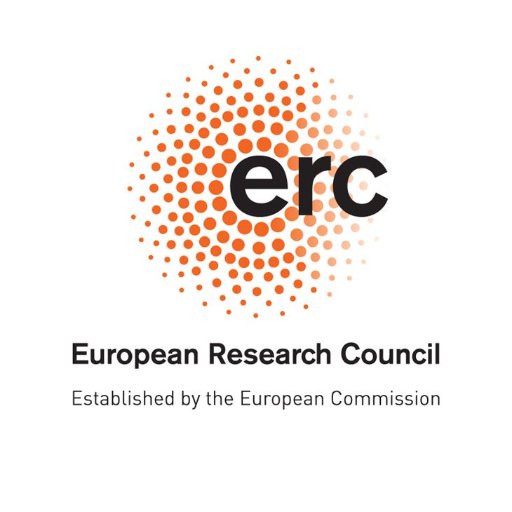
Piotr Nawrot
@p_nawrot
Followers
9K
Following
960
Media
33
Statuses
401
LLM Efficiency PhD @ Edinburgh | 🥇🥈 @ Flunkyball Polish Championships | 🥇 @ Jerry Hunter Pub's Bowling Tournament | 50000 🏆 & Legendary II @ Brawl Stars
Warsaw
Joined July 2014
Sparse attention is one of the most promising strategies to unlock long-context processing and long generation reasoning in LLMs. We performed the most comprehensive study on training-free sparse attention to date. Here is what we found:
13
115
661
@zpysky1125 (MiniMax M2 lead) drops truth bombs in their latest tech blog: > There’s no free lunch. When you reduce attention complexity, you pay a price. The question is, where? At scale, it hit hard: obvious weaknesses in complex, multi-hop reasoning. - @giffmana been
MiniMax M2 Tech Blog 3: Why Did M2 End Up as a Full Attention Model? On behave of pre-training lead Haohai Sun. ( https://t.co/WH4xOD9KrT) I. Introduction As the lead of MiniMax-M2 pretrain, I've been getting many queries from the community on "Why did you turn back the clock
1
3
10
Link to our study - https://t.co/onhzRqGVcv DM if you'd like to discuss this theory further or if you have any comments : )
arxiv.org
Sparse attention offers a promising strategy to extend long-context capabilities in Transformer LLMs, yet its viability, its efficiency-accuracy trade-offs, and systematic scaling studies remain...
0
2
11
> From the perspective of a year ago, a hybrid of Lightning Attention and Full Attention looked just as good as pure full attention. > Did we find a free lunch? Not quite. > The price became clear at larger scales: the model showed obvious weaknesses in complex, multi-hop
MiniMax M2 Tech Blog 3: Why Did M2 End Up as a Full Attention Model? On behave of pre-training lead Haohai Sun. ( https://t.co/WH4xOD9KrT) I. Introduction As the lead of MiniMax-M2 pretrain, I've been getting many queries from the community on "Why did you turn back the clock
2
21
103
I am looking for a 2-year 𝗽𝗼𝘀𝘁𝗱𝗼𝗰 to work on efficient foundation models at @InfAtEd and @EPCCed! This is part of the @ARIA_research funding for Scaling Compute: AI at 1/1000th the cost
1
17
30
Multimodal models typically need millions of examples from each modality paired with text for training. With SEMI 🌓, we integrate new low-resource modalities into LLMs with as few as 32 samples — including satellite images, galaxies, sensors, and molecules. (1/6)
3
40
213
I've been awarded a Starting Grant from @ERC_Research! As part of AToM-FM ⚛️, I'll study efficient architectures for foundation models with end-to-end tokenisation and adaptive+permanent memory Building a greener, more democratic AI
📣 The ERC Starting Grant call results are out! Find out which early-career researchers will receive funding, what they will be investigating, where they will be based... plus lots of other #ERCStG facts & figures for 2025! ➡️ https://t.co/cGctMhcJos 🇪🇺 #HorizonEurope
14
18
142
I'll take the other side of this bet...
By 2030, all jobs will be replaced by AI and robots. Easily. The US labor force is about 170 million workers. About 80 million of those jobs include hands-on work. Automated systems can work four shifts a week. Replacing all physical labor would require about 20 million
125
215
3K
Token crisis: solved. ✅ We pre-trained diffusion language models (DLMs) vs. autoregressive (AR) models from scratch — up to 8B params, 480B tokens, 480 epochs. Findings: > DLMs beat AR when tokens are limited, with >3× data potential. > A 1B DLM trained on just 1B tokens
42
237
2K
*The Sparse Frontier: Sparse Attention Trade-offs in Transformer LLMs* by @p_nawrot @PontiEdoardo @cheeesio @seb_ruder They study sparse attention techniques at scale, comparing to small dense models at the same compute budget. https://t.co/8dt7ceWhMe
5
32
204
Thanks for acknowledging Dynamic Token Pooling as a predecessor to H-Net, @_albertgu! We had some decent ideas in that paper (e2e and entropy-based tokenisation), but it surprises me that it took 2 years (an eternity in NLP) to find the right recipe and scale better than BPE
Tokenization is just a special case of "chunking" - building low-level data into high-level abstractions - which is in turn fundamental to intelligence. Our new architecture, which enables hierarchical *dynamic chunking*, is not only tokenizer-free, but simply scales better.
1
11
87
If you are at @icmlconf make sure to attend @AdrianLancucki’s invited talk on our inference-time *hyper*-scaling paper (and more!) at the tokenization workshop this Friday https://t.co/GhCIAtu4re
🚀 By *learning* to compress the KV cache in Transformer LLMs, we can generate more tokens for the same compute budget. This unlocks *inference-time hyper-scaling* For the same runtime or memory load, we can boost LLM accuracy by pushing reasoning even further!
0
3
21
The TokShop schedule is now live! Join us at #ICML2025 for invited talks, poster sessions, and a panel on the future of tokenization. https://t.co/UCdWdobEgh
#Tokenization #LLM #NLProc
0
5
6
Tokenization has been the final barrier to truly end-to-end language models. We developed the H-Net: a hierarchical network that replaces tokenization with a dynamic chunking process directly inside the model, automatically discovering and operating over meaningful units of data
98
745
5K
Tokenization is just a special case of "chunking" - building low-level data into high-level abstractions - which is in turn fundamental to intelligence. Our new architecture, which enables hierarchical *dynamic chunking*, is not only tokenizer-free, but simply scales better.
Tokenization has been the final barrier to truly end-to-end language models. We developed the H-Net: a hierarchical network that replaces tokenization with a dynamic chunking process directly inside the model, automatically discovering and operating over meaningful units of data
61
189
1K
The Bitter Lesson is coming for Tokenization The Byte Latent Transformer (BLT) showed the possibility of finding additional scaling laws related to removing tokenization but the topic seemed to get little proper coverage...
3
8
31
Do language models have algorithmic creativity? To find out, we built AlgoTune, a benchmark challenging agents to optimize 100+ algorithms like gzip compression, AES encryption and PCA. Frontier models struggle, finding only surface-level wins. Lots of headroom here!🧵⬇️
6
59
160
A very good abstraction of sparse attention in vLLM!🥳
We built sparse-frontier — a clean abstraction that lets you focus on your custom sparse attention implementation while automatically inheriting vLLM’s optimizations and model support. As a PhD student, I've learned that sometimes the bottleneck in research isn't ideas — it's
1
2
7


















